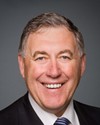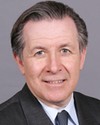Thank you.
Mr. Chairman, thank you for inviting me to appear before the Committee as part of your study on the demographic challenges of the federal public sector. Today, I have with me, from the Public Service Commission, Linda Gobeil, Senior Vice-President, Policy Branch, and Dan Coffin, Director General, Special Projects, Staffing and Assessment Services.
The Public Service Commission (PSC) is an independent agency reporting to Parliament on public service staffing and political impartiality. We recruit talented Canadians to the public service, drawn from across the country. We continually renew our recruitment services to meet the needs of a modern and innovative public service.
Our mandate is staffing—more on the supply side of the supply-demand equation. Others such as Statistics Canada and the Public Service Human Resources Management Agency of Canada, with us, describe the demand for public service workers. I have also provided an overview of the federal public service population numbers in Attachment 1. I have shared with you summaries of two Statistics Canada reports—Attachments 2 and 3—that provide greater detail.
This is what we know. Turnover is already starting, and hiring activities are up. The public service is on average older than the labour force. The public service will be affected by the baby boom retirement wave before the labour force. There has been a shift to more knowledge workers in the public service. With an increase in qualification requirements, the average age of entry is 35. The average age of retirement in 2003-2004 was close to 58.
The rate of retirement, based on data from Statistics Canada, is increasing from a rate of 1.6% in 1999-2000 up to 2.3% in 2003-2004. It is projected to go up to 3% in 2008-2009, peaking at 3.5% in 2012-2013 before it gradually drops again.
The overall departure rate from the public service was 3.7% in 2003-2004. The overall departure rate include retirements, voluntary and involuntary departures, and death. This is a low rate compared with those of other public services and the private sector.
Can we meet the future needs for the public service? Here I can only speak to our experience at the Public Service Commission to date. Under the new Public Service Employment Act, the employer is responsible for determining what its staffing needs are. You may wish to follow up with the Public Service Human Resource Management Agency of Canada.
We have seen and continue to see a strong interest in public service jobs. Within a 10-month period from April 2006 to January 2007 our public service resourcing system, an automated application and screening tool, processed close to 920,000 applications. Within this same period, our jobs.gc.ca website received close to 19.5 million visits. This number includes repeat visitors, but it demonstrates the level of interest in public service jobs.
We have surveyed post-secondary students. In a sample of 29,409 students, the public service was identified as an employer of choice.
Of course, the whole selection and assessment process is about matching supply and demand. For the system to work well, we need to understand both supply and demand. Right now we are operating a supply-driven recruitment system. We know that shortages of workers appear in some areas. Overall, though, there is no shortage of potential public service employees.
On the demand side, better plans are required that identify current and anticipated human resources needs, integrated with business planning. With better planning, staffing can take place before there is a critical shortage. When the public service identifies areas of shortage, such as HR specialists, we along with the departments run special recruitment initiatives that identify many qualified candidates.
For example, there is a current shortage of compensation and benefits advisers. We ran a recent external staff process for compensation and benefits advisers. We received 6,000 applications. With the help of our automated system, we determined that 652 applicants met the requirements for the job and we referred these applicants to organizations for further consideration.
We have made numerous adjustments to large, government-wide recruitment programs such as the Post-Secondary Recruitment program, the Federal Student Work Experience Program, and the Recruitment of Policy Leaders program. Applicants to our programs are highly representative of visible minorities; however we have yet to achieve appointment levels equal to workforce availability. I have provided you with more detailed information in Attachments 4 and 5. Consistently we get many applicants with few permanent hires.
These programs are supply-driven programs. They demonstrate strong interest in the public service but departments and agencies are not hiring in large numbers from these programs. More often, hiring by departments is based on immediate short-term needs.
We are looking closely at how the permanent hires enter into the public service. Last year, out of 44,662 hiring activities, 11.4% (5,090) were for permanent jobs and 22.6%—10,088 positions—were for a specified period, the rest were students or casuals.
The use of contingent workers—temporary, casual, or other arrangements—is a key indicator for ad hoc staffing and often a way to get into the permanent public service. We found that 17% of new employees appointed to term and indeterminate positions had a recent history of casual employment.
The system needs to be more strategic. Contingent workers mean that delegated managers are making ad hoc decisions adding up to big numbers. Deputy heads delegate their staffing authority, but they must lead departmental HR planning, strategies, and corporate approaches to meet long-term business needs.
Mr. Chairman, on another issue, in April 2006 the PSC enhanced Canadians' access to federal public service officer-level jobs by implementing a national area of selection in the national capital region. We are on track to expand the use of national area of selection for all officer-level jobs open to the public across Canada by next month, April 2007. Subject to an impact assessment, we aim to use a national area of selection for all jobs in the public service by December 2007.
In conclusion, there is no lack of interest in the public service. We see no sign of this changing. For many it remains a career of choice. Best practices from the public and private sectors show that for effective recruitment to happen, four things are required: human resource needs must be understood, brand should be established, talent attracted, and processes enhanced.
Attachment 6 includes more information about best practices in recruitment. We at the Public Service Commission are improving our processes. The public service needs to improve its definition of need through planning of its human resources requirements to develop appropriate strategies.
Mr. Chairman, the PSC has the capacity to undertake large recruitment initiatives to meet identified needs. We are committed to supporting an accessible, non-partisan, merit-based and representative public service.
Thank you for your attention. I would be pleased to answer any questions you may have.




